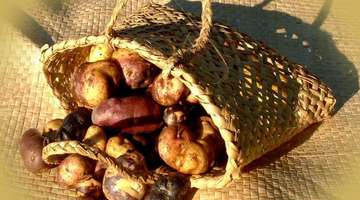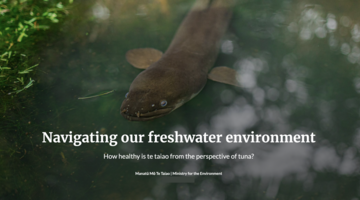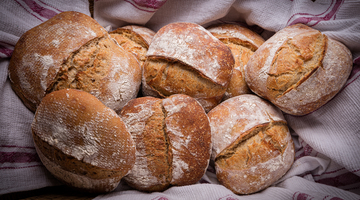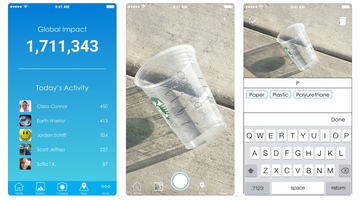

Students can explore te ao Māori concepts in the context of farming and food production through Kiwi Kai virtual farm – an introduction. This virtual farm weaves te ao Māori concepts such as ...
READ MORE

Kiwi Kai is a farm simulator that explores the relationships between a healthy environment, healthy kai, healthy people and communities. The goal is manaakihia te taiao, whakatipua he kai hauora ...
READ MORE

Taewa are traditional potato varieties grown by early Māori settlers in New Zealand. Find out how researchers are now developing unique food products from taewa. Taewa were introduced to New ...
READ MORE

Te mana o te wai describes the first right for water being with the water – rivers, lakes and streams as well as the ocean. After human water uses, there must be enough natural flow remaining to ...
READ MORE

Navigating our freshwater environment is an interactive storymap that explores the state of rivers, lakes and wetlands – in a novel and engaging way. The storymap considers what’s going on from ...
READ MORE

Biotechnology is part of everyday life and has been for thousands of years. People have cultured bacteria to make yoghurt and cheese, used yeasts to make bread, fermented grapes to make wine and ...
READ MORE

Be part of a worldwide movement and use Global Earth Challenge to submit or classify photos to help our planet’s environment and human health. Global Earth Challenge is a citizen science campaign ...
READ MORE

Capture wild microbes and turn them into bread – for science! This is a project you could do with your students in the classroom or they can do at home. Microbes are found in every environment on ...
READ MORE

Litter is everywhere – but how much is there, and why does it matter? Litterati is an online citizen science (OCS) project that allows participants to photograph, upload and tag litter in their ...
READ MORE

The Science Learning Hub has a selection of resources that have been translated into te reo Māori and a number of resources that feature both te reo Māori and English. Our webinar Opportunities ...
READ MORE

Freshwater is defined as inland water – springs, streams, rivers, lakes and wetlands. It includes water that is stored in glaciers and under the ground within soil and in aquifers. Freshwater is ...
READ MORE

Students develop knowledge of prototype taewa products and design a label that reflects the cultural value and specified market for the product. Purpose Understand the attributes and benefits of ...
READ MORE
Food technologists are developing new taewa products that will increase the value and demand for taewa crops. Identifying opportunities requires innovators who constantly think of new ideas and ...
READ MORE
This episode of Project Mātauranga explores the work of the Toheroa Abundance Project. Toheroa were once prolific on the beaches of Northland, but historical mass commercial harvesting has ...
READ MORE
Dr Shaun Ogilvie, Dave Hamon and Larn Wilkinson tell us about their work in a collaborative study involving Cawthron, the Hauraki Māori Trust Board and local iwi. The focus of this study is to ...
READ MORE

Explore food and resource-gathering traditions practised by Ngāi Tahu whānau in Te Waipounamu. Download the PDF A framework for using the Ngāi Tahu Mahinga Kai video series to teach social ...
READ MORE

This interactive provides a quick start guide with key information to get started playing and facilitating Kiwi Kai’s virtual farm. We recommend starting with the Quick start guide. Select here ...
READ MORE

Use this interactive graphic organiser to explore your personal views and values relating to water. Place each statement card where you feel it belongs. There are no right or wrong answers.
READ MORE